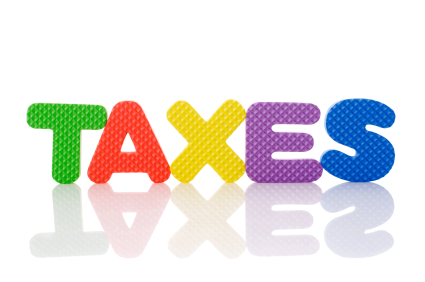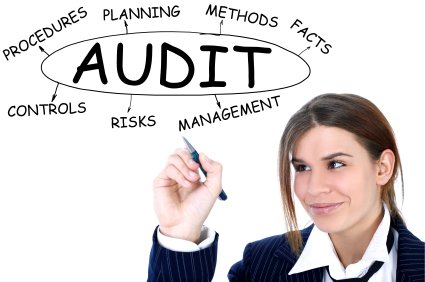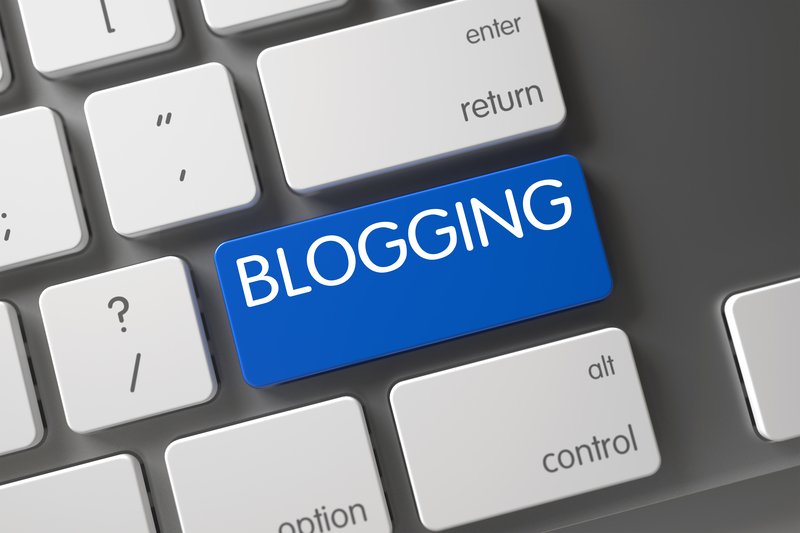- Essential Bookkeeping Habits For Audit Ready Books in Canada
- Self Employed Tax Deductions
- Home Office Expense Deduction
Home Office Expense Deduction
Applies To Self-Employed Status | Contract for Services Relationships
By L.Kenway BComm CPB Retired
Revised July 31, 2024 | Edited May 7, 2024 | Updated March 4, 2024 | Originally Published on Bookkeeping-Essentials.com in 2009
WHAT'S IN THIS ARTICLE
Highlights | Who Qualifies? | Capital Expenditures | How to Prorate Expenses | Things to Consider
NEXT IN SERIES >> Meals and Entertainment Expenses
Note this article is for sole proprietors. Claiming your home office tax deductions has slightly different rules and criteria if you are:
- incorporated and are home based;
- employees and commissioned sales employees that telecommute (i.e. are home-based).
 Who Qualifies For The Home Office Expense Deduction?
Who Qualifies For The Home Office Expense Deduction?Highlights Of This Post
Who qualifies for the home office expense tax deduction?
- Do you qualify to deduct your home office expenses?
- When is a meeting not a meeting in CRA's eyes?
- Is it the principal place of business?
- Is your home space used (a) exclusively to earn business income; AND (b) on a regular and continuous basis for meeting clients, customers or patients?
- Are there any restrictions or limitations on the claiming home office expense deduction?
- Home office computers and cell phones
- Should you claim capital cost allowance on your principal residence?
- Change in the use of principal residence
How to prorate your home office expense deduction
- Option 1 - Shared home office space for your business
- Option 2 - Exclusive use area for your home office
Home office expense deduction things to consider - what to INCLUDE ... what to EXCLUDE
- Property taxes
- Mortgage interest
- Home maintenance expenses
- Insurance - personal vs. business
Who Qualifies for The Home Office Expense Deduction?
Sole proprietors with home based businesses receive some favorable tax treatment in Canada. Claiming your home office expenses as a tax deduction on form T2125 is one tax saving opportunity you don't want to miss when doing your tax preparation.
The calculation of business use of home expenses is found on page 4 of Form T2125 Statement of Business or Professional Activities.
To claim this tax deduction, you are going to have to gather some information and meet some strict criteria, laid out by the Canada Revenue Agency (CRA) in Guide T4002, Business and Professional Income.
Note that the information discussed here is for sole proprietors. Claiming home office tax deductions has slightly different rules and criteria if you are:
- incorporated and home based;
- an employees or a commissioned sales employee that telecommutes (i.e. are home-based).
AUDIT READY
A flat rate deduction has never been available to sole proprietors. The temporary flat rate method was available to employees as a pandemic measure for the years 2020 to 2022. It was discontinued for the tax years 2023 forward.
Let's look into who qualifies for this deduction.
Do you qualify to deduct your home office expenses?
Do you qualify to deduct your home office expenses?
Prior to 1988, there were no restrictions on deducting home office expenses to offset other earned income. Since 1988, some restrictions apply.
CRA's Guide T4002 tells us you can take the home office expense tax deduction if you meet one of the following conditions:
- It is the principal place of business [where principal means your chief or main place of business more than 50% of the time]; OR
- The space is used exclusively to earn business income on a regular AND continuous basis for meeting clients, customers or patients [on the premises].
When is a meeting not a meeting in CRA's eyes?
When is a meeting not a meeting in CRA's eyes?
CRA's (Canada Revenue Agency) definition of a meeting makes it very difficult for sole proprietors to claim the home office deduction using option two.
A December 2020 blog by Blue J (a legal technology company) entitled, Home office deduction - When is a meeting not a meeting? explains CRA's definition of a meeting. The issue stems because the phrase "meeting customers" is not defined in the ITA (IncomeTax Act).
Torkin Manes April 2020 blog "What Expenses Can You Claim For Your Home Office?" explains CRA's "longstanding administrative position of what constitutes a meeting. ... a “meeting” must involve two or more persons in the same place [a face-to-face event], despite case law [Landry v. The Queen] which suggests that a telephone call [for the purposes of subparagraph 8(13)(a)(ii)] constitutes a meeting for those purposes."
Tax Interpretation 2013-0481171E5 E Home Office Expenses discusses whether "meeting customers" should include modern technology and include meetings by such means as email, telephone, and Skype. This interpretation mentions that "section 18.28 of the Tax Court of Canada Act states that informal Tax Court of Canada decisions should not be treated as a precedent for any other case" (referring to Landry v. the Queen decision?).
Tax Interpretation Neal Armstrong's News of Note dated February 16, 2014 titled Telephoning is not meeting someone reported "Notwithstanding some Tax Court decisions (e.g., Glen) finding that the phrase can include telephone meetings, CRA considers that “the phrase ‘meeting customers or other persons’…includes only face to face encounters.”"
Mr. Armstrong went on to describe when a phone-in could be argued as valid. "This arguably suggests that a directors’ meeting physically conducted in, say, Luxembourg, but with Canadians phoning in, qualifies as a meeting held in Luxembourg – at least, where two of the directors are face-to-face in Luxembourg."
In general, the implication is that virtual or telephone meetings do not count. To my knowledge, CRA has still not revisited its interpretation of "meeting" given how technology has changed current business practices allowing for virtual meetings as a normal course of business. It's unclear whether CRA would reconsider its position if you were to include virtual meetings using online conferencing platforms. If you operate a virtual business, you would have to discuss with your accountant whether your virtual meetings count as a meeting enabling you to claim this option for your home office expense deduction.
Is it the principal place of business?
Is it the principal place of business?
We need to break this down to determine how you qualify under this criteria for the home office expense deduction.
If you:
- use part of the home for both business and personal living (i.e., you do not have an area not exclusively used to earn business income), OR
- have an exclusive work area BUT you do not "meet" (per CRA's definition of a meeting) customers on a regular basis on your premises,
you must prorate your claim based on hours of use in a day and days of use in a week. Here's the steps to making the option one proration for your tax return.
If you are a virtual business (do business over the internet and through online meetings) you would fall in this category as you are not "meeting" customers on your premises.
AUDIT READY
If you are able to claim under criteria one, Canadian tax expert Evelyn Jacks recommends in Master Your Taxes you make and date a sketch of the business use area in relationship to the personal living space of the house. Keep it on file in the event of an audit to provide support documentation for your claim. It would also be a good idea to take photos of your home office workspace for your file. This will be especially important and valuable if you move after filing a tax return based on that location.
Is your home space used (a) exclusively to earn business income; AND (b) on a regular and continuous basis for meeting clients, customers or patients?
Is your home space used (a) exclusively to earn business income; AND (b) on a regular and continuous basis for meeting clients, customers or patients?
Both conditions must be met to use this option. It's not as straightforward as it looks given how CRA interprets meetings.
First, the work space must be segregated and used only for business and no other purpose. This means your family members can't use it in the evenings or weekends and guests can't sleep on the sofa bed when they are in town. The closet can't be used as a spare closet for non-business stuff. It must be used exclusively for business and separate from your family living space.
The second part of this criteria is regular and continuous meetings on the premises. In this instance you want to ensure you keep an appointment log as proof for CRA if audited. You might even want to consider having your clients sign in the log when they come to your office. A business journal is also a good idea.
AUDIT READY
This means if you regularly meet your clients utilizing online meeting technology such as GoToMeeting, Zoom or some other platform, you DO NOT meet the regular meetings criteria and must claim your home office expense deduction using option one not option two.
It also means that if you have a business that has infrequent or irregular meetings, you DO NOT meet this criteria and you must prorate your claim based on hours of use in a day and days of use in a week method used in option one.
If you do qualify to use this option, here's the steps to making the option two proration for your tax return.
Are there any restrictions or limitations on the claiming home office expense deduction?
Are there any restrictions or limitations on the claiming home office expense deduction?
Once you determine you have met the criteria to claim the business use of home expense tax deduction, be aware the deduction has limitations. Your tax software will automatically apply these limitations.
The deduction for home office expenses cannot be used to create or increase a loss for income tax purposes. However, it can be carried forward indefinitely if you are unable to use it in the current year AND continue to meet the criteria to make the claim.
Any carried forward expenses will have to be used up in any year there is business income, to reduce your income to zero.
If you cease this business, the carry forward deduction is lost. It cannot be transferred to another business startup operating from the same residence.
AUDIT READY
Be aware that your home telephone line, consumed supplies and similar expenses are not deductible under this section as they do not relate to the work space itself. Income Tax Folio S4-F2-C2, Business Use of Home Expenses 2.32 and 2.33 says the business portion may be deducted as a regular business expense.
I probably don't have to say this, but just in case, you can only deduct an expense of any kind ONCE ... so if you claim something under business use of home expense, it cannot be deducted anywhere else!
Capital Expenditures
Home Office Computers and Cell Phones
You might be wondering if you can deduct your home office equipment here ... things like your computer, laptop, cell phone?
The short answer is no, not here under home office expenses. These are considered capital expenses so they are treated a bit differently. They are not fully deductible in the current year but deducted over the life of the asset.
Read about how capital expenses affect your income tax preparation here.
Should You Claim Capital Cost Allowance On Your Principal Residence?
The self-employed in Canada have the option to claim capital cost allowance (CCA) and mortgage interest in the calculation of this tax deduction.
Tax experts don't usually recommend you take advantage of the opportunity to claim CCA. Why? Because it is subject to capital gains and recapture rules which removes the tax exempt status of a portion of your home as a principal residence.
What does this mean? It means you would have to pay capital gains on the depreciated portion of your home in the future when you sold it.
AUDIT READY
If you are home-based, you really should be aware of the rules surrounding change of use of principal residence discussed below.
Change In the Use Of Principal Residence
There are CRA (Canada Revenue Agency) rules regarding changing part of your principal residence to a rental or business property that you need to be aware of.
The CRA does have rules around the use of a principal residence for self-employed individuals, including potential "change-in-use" rules. Generally, if you are using part of your home for business purposes, particularly if you have designated it as your principal place of business, there may be tax implications when you sell your home.
However, there are also exceptions. CRA considers you to have not changed the use of your property if:
- the income producing use is ancillary to the main use of the property as a residence,
- there is no structural change to the property, and
- you do not deduct capital cost allowance on the part you are using for the business.
As such, the "change in use" rules may or may not apply to you depending on your specific circumstances. It's recommended to consult with a tax professional or refer to the CRA's resources to fully understand how these rules may apply to you.
If you are a self-employed worker in Canada who uses a shared home office space for your business or you don't meet clients, customers, or patients on the premises, you can still claim a portion of your home office expenses as a deduction on your income tax.
Here are the steps:
- Measure the total area of your home in square feet or meters including hallway, bathrooms, and kitchen but excluding unfinished areas such as a basement.; i.e., only include finished living space.
- Determine the size of the shared working area.
- Determine the portion of the day that the working area is used exclusively for business purposes.
- Calculate your home office expense deduction: Take the size of your shared work space, multiply it by the portion of the day used strictly for business, and then divide this result by the total size of your home. This will give you a percentage that represents your shared work space usage.
- Apply this percentage to your eligible home office expenses such as rent, mortgage interest, property taxes, home insurance, utilities, and maintenance costs.
For example, if your shared workspace is 100 square feet, your entire home is 1000 square feet, and you use the space for work from Monday to Friday from 8:00 am to 5:00 pm while your family uses the work space in the evenings and weekends, your calculation would look like this:
- 100 (office space) / 1000 (total space) x (10 hours in operation each day / 24 hours in a day x 5 days in operation each week / 7 days) = 0.03 or 3%
If your home office expenses total $10,000 for the year, you would be able to claim $300 (3% of $10,000) as a home office expense.
Note: You must be able to validate your claim with appropriate documentation, including a log of the time the space is used for business and receipts for expenses, in case of an audit.
Tax software programs like Xero's TaxCycle or Intuit's Profile have a space for these calculations right on the worksheet. It is important to keep your notes on how you made your calculation so if your tax program has the feature, make a memo note on it.
Once your worksheet is complete, you (or your tax program) carries the amount up to page 2 of Form T2125 to line 9945. If there was an amount carried forward from the prior year, you will see it in your worksheet just under the capital cost allowance.
AUDIT READY
It is recommended you take a picture of your office space as well as draw up a floor plan of your residence. Why?
- You may move or renovate your residence. It often takes years after you've submitted your claim before you are audited. Then it may take many more months before the audit is concluded. The picots and floor plan at the time you filed go a long way to supporting your claim.
- During an audit of your home office expenses, CRA may well ask for a copy of the floor plan of the residence with the home office. This is exactly what happened to the columnist at the Financial Post, Jamie Golombek in October 2022. You can read about his ordeal in his article, CRA battle shows what's involved when you take on the tax man.
Option Two - (a) Exclusive Use Area for Your Home Office AND (b) Meet Clients on a Regular and Continuous Basis
In Canada, the home office expense deduction is based on the portion of your home that is used for business purposes. The portion of your expenses that can be deducted is determined by dividing the space used for your business by the total size of your house.
To make this claim using this option, you must meet both conditions. As discussed earlier, CRA makes it extremely hard in this day of office technology tools to meet the second criteria of this option.
Here are the steps you can follow:
- Determine the total size of your home in square footage or meters; include hallway, bathrooms, and kitchen but exclude unfinished areas such as a basement.; i.e., only include finished living space.
- Determine the size of your home office in square footage or meters.
- Divide the size of your home office by the total size of your home. This will give you the percentage of your home used for business purposes.
- Calculate the total cost of your eligible home expenses such as electricity, heating, maintenance, property taxes, and home insurance.
- Multiply these costs by the percentage of your home used for business purposes. This will provide you your prorated home office expense amount that you can claim.
For example, if your home office takes up 10% of your home’s total area, you can claim 10% of your eligible home expenses. your calculation would look like this:
- 100 (office space) / 1000 (total space) = 0.10 or 10%
If your home office expenses total $10,000 for the year, you would be able to claim $1000 (10% of $10,000) as a home office expense. You can see under this option, the deduction is greater than under option one but it is harder to meet the threshold to claim this option.
Remember to keep all your receipts and bill statements as you may be asked to provide these if your tax return is reviewed by the CRA.
As stated earlier, the deduction for home office expenses cannot create or increase a business loss. In other words, you cannot use home office expenses to reduce other income to zero. If you cannot use all of your home office expenses in the year, you are allowed to carry the expenses forward and deduct them in the next year.
Things to Consider Before Claiming Home Office Expenses: what to include, what to exclude
 Home Office Expense Deduction Things To Consider
What To Include ... What To Exclude
Home Office Expense Deduction Things To Consider
What To Include ... What To ExcludeI'm going to discuss the home office expense deductions in the reverse order they show on Part 7 of Form T2125.
Property Taxes and Your Home Office Expenses
Property Taxes and Your Home Office Expenses
In British Columbia, you can apply to defer your property taxes beginning at the age of 55 ... although I don't know why you would want to as it may affect your future borrowing power against your home equity in times of emergencies.
Banks like to have first claim to your collateral. I have a friend who is a bank manager and she says they would want you to pay off your back taxes before they would consider loaning you money with your home as collateral. That would be awful news to hear if you are having a financial crisis and need to borrow money.
Anyway, if you do go this route, it's my understanding your deferred property taxes are still claimable. What I'm unsure about is whether the grants should reduce the claim. [Sidebar: I live in Alberta now and dearly miss my homeowner grants.]
I like to be conservative in my tax saving strategies (it's just my nature and I can't afford to be the one to challenge the government) so I would reduce the taxes to the amount I actually paid. Why? Because all rebates, grants, assistance must offset the expense or be claimed as income. Read more here in point 2 of non-deductible business expenses.
However, keep in mind that I'm not a tax expert. Sometimes I don't understand the nuances that tax professionals are trained in even after it is explained to me. At those times, I just rely on their expertise. That's why it's so important to always check in with your tax accountant to get customized advice.
Mortgage Interest and Your Home Office Expenses
Mortgage Interest and Your Home Office Expenses
CRA IT-533 Bulletin - Interest Deductibility and Related Issues defines interest as having to meet three criteria.
- The amount must be calculated on a day-to-day accrual basis.
- The amount must be calculated on a principal sum.
- The amount must be compensation for the use of the principal sum.
In more general terms here are the deductibility rules:
- Mortgage Interest: You cannot deduct mortgage payments of your home. However, you are allowed to deduct a part of the interest part of your mortgage. The deductible portion is usually based on the percentage of your home that is used for your business activity.
Stephen Thompson in 167 Tax Tips for Canadian Small Business 2009 explained that if you increase your mortgage to finance the start-up of your business (as opposed to personal debt), the portion of the mortgage interest that relates to the business is 100% deductible as a business expense. If that applies, the interest expense would be reported on line 8710 not here. - Rent Expense: If you rent your home, you can deduct a portion of the rent for your home office. The amount you can deduct is usually based on the proportion of your home that is used for your business.
- Home Line of Credit: It is my understanding If you use a home equity line of credit (HELOC) for business purposes, you might be able to deduct the interest. However, it should be noted that this interest would likely need to be directly tied to expenses from your business. The CRA would require you to demonstrate that the funds were used for business purposes. If that applies, the interest expense would be reported on line 8710 not here. The interest on a general secured line of credit against your home is not considered a mortgage, as far as I know and therefore not deductible.
It's key to note that mortgage interest is only a deduction if you met the criteria to claim the home office expense deduction.
Home Maintenance Expenses and Your Home Office Expenses
Home Maintenance Expenses and Your Home Office Expenses
You must only include expenses that relate to the whole house or your home office in particular. Costs related solely to personal use areas are to be excluded ... this means you CANNOT just take a percentage of the total home maintenance costs.
Always keep in mind the general rule - personal use expenses are NEVER deductible for business purposes.
Insurance - Personal vs Home Business
Insurance - Personal vs Home Business
If you are operating your business from your home, be sure your policy includes coverage for operating a business from your home. You would hate to invalidate a policy just because you didn't know any better. If there is ever a major event, you can bet the insurance agent will look around to find a reason to deny a claim. An unreported, uninsured home based business is a reason to deny your claim.
The additional business coverage is 100% deductible under your regular business expenses on line 8690, not as part of the home office expenses. If you are in any kind of consulting capacity, expect to be required to provide proof of professional liability or errors and omissions insurance coverage.
Any expense related to separate coverages listed in your policy for personal property items should NOT be included in the proration of your home insurance for this calculation.
I strongly recommend you read the following articles at Michael James on Money:
- house insurance for home based business; and
- an explanation of insurance company squeamishness about home business.
Claiming Input Tax Credits (ITCs) on home office expenses
Claiming Input Tax Credits (ITCs) on home office expenses
Assuming the business is a GST/HST registrant and that they qualify for the home office expense deduction, then consider one of the following:
If you want to book the utility expenses monthly to your books, prorate the amount at the time you book the entry. For example, if you were eligible to claim 10% for home office expenses, a hydro bill for $400 before 5% GST would be recorded:
DR Home Office Expenses 10% excluding GST/HST ITC = $40
DR Owner's Draw 90% including GST/HST ITC = $360 x 1.05 = $378
DR GST Payable (for ITC's) 10% = $40 x 5% = $2
CR Cash in Bank 100% = $400 x 1.05% = $420
At year-end, reconcile the home office expense account to the T2125 and adjust accordingly.
If you do it as an annual entry, then calculate the amount on the T2125. Once that is done, book an entry something like this into the books:
DR Home Office Expense $xxx split from T2125
DR GST Payable (for ITCs) $xxx split from T2125
CR Owner's Contribution $xxx total of T2125
Honestly, the only reason I would book these expenses monthly would be to reduce data entry at year-end as well as reduce the likelihood of the client losing the paperwork.
Should You Enter Home Office Expenses In QuickBooks?
Should You Enter Home Office Expenses In QuickBooks?
Sole proprietors claiming their home office expenses do so on the T2125 schedule of the T1 income tax and benefit return. I don't usually record the amount in the books.
IF you feel you really want to show your home office expenses on your income statement, I'd create the home office expense account BELOW the line as an "other expense" type of QuickBooks account. Your entry would be:
DEBIT Home Office Expense (amount calculated on your T2125 schedule)
CREDIT Owner's Contribution
As I said, I normally don't bother recording this expense on my books because if I didn't have my business, I'd still be spending the same amount of money ...
Remember there is often a difference between book and tax for bookkeeping purposes.













